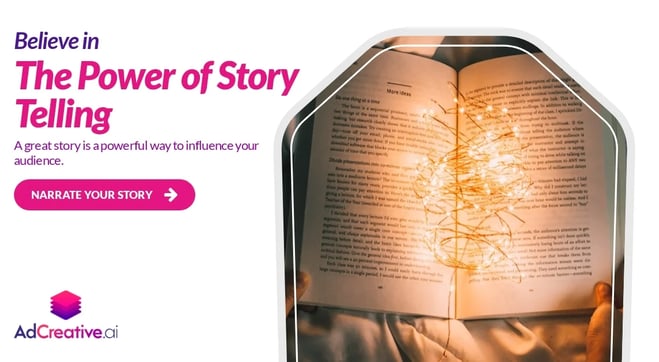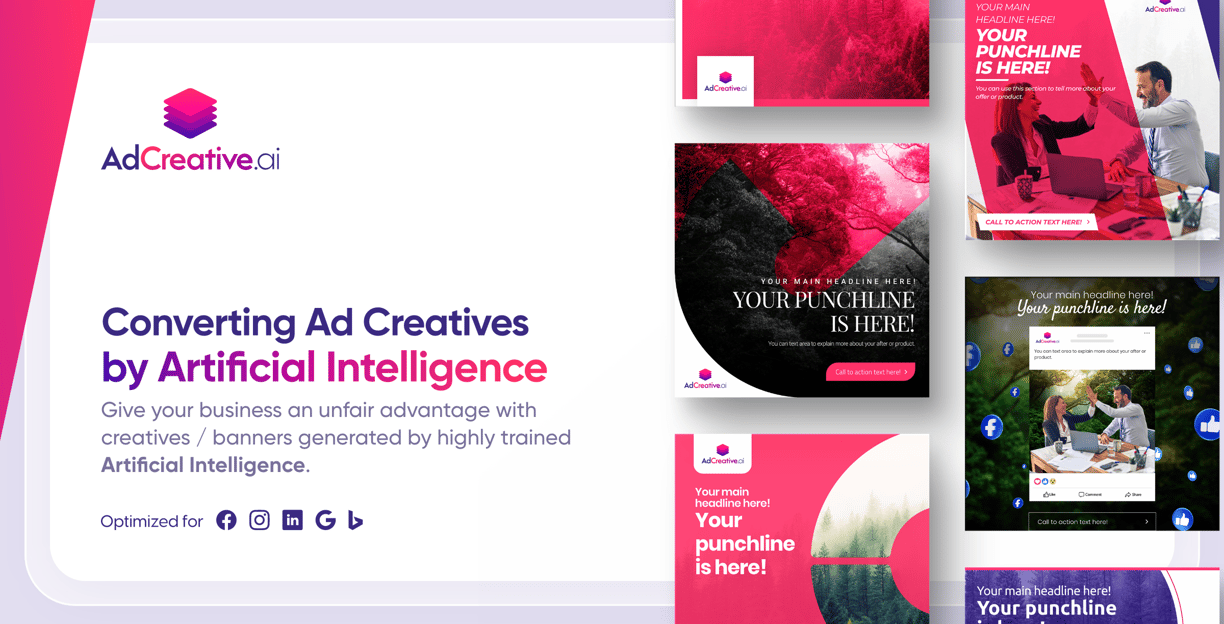The Misuse of AI: How Humans Can Beat AI With Examples
AI


This article aims to provide a detailed and comprehensive comparison between AI and human involvement in these creative processes—real-life incidents with the misuse of AI. Furthermore, we can gain insights into how these two forces shape the industry by exploring AI's and human professionals' capabilities, strengths, and limitations misuse.
Understanding AI in Video Production
AI has revolutionized the way videos are produced and edited. With advancements in machine learning algorithms and computational power, AI systems can now analyze, process, and manipulate video content in previously unimaginable ways.
Automated Editing and Post-Production
One of the key advantages of AI in video production is its ability to automate various tasks involved in the editing and post-production processes. For example, AI algorithms can analyze video footage, identify key moments, and seamlessly stitch them together to create a visually appealing final product. This automation can significantly reduce the time and effort required for editing, allowing content creators to focus more on the creative aspects of their work.
Enhanced Visual Effects and CGI
AI-powered tools have also significantly contributed to visual effects and computer-generated imagery (CGI). With AI algorithms, complex visual effects that were once time-consuming and resource-intensive can now be generated with greater efficiency and accuracy. In addition, AI can simulate realistic environments, create lifelike characters, and even enhance the overall visual quality of the content.
Pros of AI in Video Production
Automated Editing and Post-Production: AI algorithms can automate laborious tasks involved in editing and post-production, such as footage analysis, scene selection, and seamless stitching of clips. This allows content creators to save time and focus more on the creative aspects of their work.
Enhanced Visual Effects and CGI: AI-powered tools enable the generation of visually stunning effects and computer-generated imagery (CGI). These algorithms simulate realistic environments, create life-like characters, and enhance overall visual quality, providing an immersive experience for the audience.
Cons of AI in Video Production
Lack of Creativity and Intuition: AI systems must improve their ability to think creatively or intuitively. They rely on predefined algorithms and patterns, which may hinder their capacity to generate genuinely creative and original content.
Limited Emotional Connection: AI algorithms struggle to replicate the emotional depth and human connection that can be achieved through storytelling and nuanced performances. This can result in content that lacks the authentic human touch and fails to resonate with the audience on a deeper level.
Subscribe to our newsletter
The Human Touch in Video Production
While AI has brought remarkable advancements to video production, human involvement remains crucial for delivering a truly captivating and emotionally engaging experience to the audience. In addition, human professionals get a unique set of skills and qualities that AI algorithms cannot replicate.
Creativity and Intuition
Creativity is a fundamental aspect of video production, and it stems from human imagination and intuition. Human professionals can think critically, make artistic choices, and experiment with unconventional ideas, ultimately adding a distinct touch to their work. In addition, this creativity is often fueled by the human capacity to empathize and connect with the intended audience, resulting in content that resonates on a deeper level.
Storytelling and Narrative
Storytelling lies at the heart of video production, where human professionals excel. The ability to craft compelling narratives, develop well-rounded characters, and evoke emotions through storytelling is a unique skill humans possess. By understanding the nuances of human behavior, feelings, and cultural contexts, human professionals can create narratives that captivate and leave a lasting impact on the audience.
Pros of Human Professionals in Video Production
Creativity and Artistic Vision: Human professionals can think critically, make artistic choices, and experiment with unconventional ideas. Their creativity stems from imagination, intuition, and the capacity to empathize with the audience, resulting in content that stands out and makes a lasting impact. 2. Storytelling and Narrative Expertise: Crafting compelling narratives, developing well-rounded characters, and evoking emotions through storytelling are skills inherent to human professionals. They understand the nuances of human behavior, emotions, and cultural contexts, allowing them to create narratives that captivate and resonate with the audience.
Cons of Human Professionals in Video Production:
Time and Resource Constraints: Human professionals may face limitations regarding time and resources. Producing high-quality video content requires extensive planning, coordination, and execution, which can be challenging within the constraints of budgets and schedules. 2. Subjectivity and Bias: Human professionals are susceptible to subjective preferences and biases that may influence their decision-making. This can result in variations in the quality and style of video content, depending on individual perspectives and personal preferences.
Subjectivity and Bias: Human professionals are susceptible to subjective preferences and biases that may influence their decision-making. This can result in variations in the quality and style of video content, depending on individual perspectives and personal preferences


Risks and Ethical Considerations in the Evolving Landscape of AI
While the advancements in artificial intelligence (AI) have brought immense opportunities and advancements in various industries, it is crucial to acknowledge the risks and ethical considerations associated with its evolving nature. The potential for AI to be used wrongly or destructively requires careful attention and responsible implementation.
Risks of AI Misuse
Privacy Concerns: As AI systems gather and analyze vast amounts of data, there is a risk of violating individual privacy rights. Improper handling of personal information and surveillance technologies powered by AI can lead to privacy breaches and potential misuse of sensitive data.
Algorithmic Bias: AI algorithms are only as unbiased as the data they are trained on. Suppose the training data contains inherent biases or reflects societal prejudices. In that case, AI systems can perpetuate and amplify these biases, leading to discriminatory outcomes in hiring practices, law enforcement, and financial services.
Autonomous Weapons: The development of AI-powered autonomous weapons raises significant ethical concerns. Without proper regulation and human oversight, these weapons could make life-or-death decisions, leading to unintended consequences and a loss of control over their actions.
Ways AI Can Be Misused
Facial Recognition Surveillance: Several instances of facial recognition technology used for mass surveillance have been reported. In some cases, governments and organizations have employed AI-powered systems to monitor and track individuals without proper consent or oversight, raising concerns about privacy and civil liberties.
Algorithmic Bias in Sentencing: AI algorithms used in criminal justice systems have been found to exhibit bias against marginalized communities. These algorithms have led to disproportionately harsh sentences and perpetuated systemic inequalities within the justice system.
Deepfakes and Misinformation: AI-generated deepfake videos and images can be used to spread misinformation and manipulate public opinion. Political figures and celebrities have been targeted by deep fake technology, which has the potential to undermine trust, disrupt elections, and incite social unrest.
Automated Content Moderation: AI-powered content moderation systems on social media platforms have faced challenges in accurately distinguishing between harmful content and legitimate speech. Overreliance on automated systems has resulted in censorship and the forced removal of valuable content.
Financial Market Manipulation: AI algorithms in high-frequency trading can lead to market manipulation and volatility. Flash crashes and unintended consequences have raised concerns about the potential risks of AI-driven financial decision-making.
Real-world examples of incidents where AI was used to harm, defraud, or manipulate:
AI-Generated Deepfake Pornography: Deepfake technology has been misused to create non-consensual explicit content by superimposing someone's face onto detailed images or videos. This unethical use of AI has violated privacy and caused significant harm to individuals whose identities were maliciously exploited.
AI-Powered Chatbot Manipulation: In 2016, Microsoft's Twitter chatbot, Tay, was targeted by online trolls who manipulated its machine-learning capabilities to spread hate speech and offensive content. This incident highlighted the potential for AI chatbots to be easily influenced and used by malicious users.
Social Media Manipulation: AI algorithms have been used to amplify misinformation and manipulate public opinion on social media platforms. In some cases, automated bots and AI-powered accounts have been deployed to spread false narratives, influence elections, and create social discord.
AI-Driven Cyberattacks: Hackers and cybercriminals have employed AI technology to carry out sophisticated and targeted cyberattacks. AI algorithms can automate and enhance the effectiveness of phishing attacks, malware distribution, and data breaches, posing significant risks to individuals and organizations.
AI-Powered Financial Fraud: fraudsters have utilized AI algorithms for complex financial scams. These scams involve using AI to impersonate individuals, create convincing fake identities, and manipulate financial markets for personal gain.
These examples highlight the potential misuse and harm that can arise from the irresponsible use of AI technology. It underscores the importance of ethical guidelines, regulations, and ongoing efforts to address the risks associated with AI to protect individuals and ensure its positive impact on society.

AI Misuse Cases Continue:
AI-Powered Voice Cloning for Fraud: AI technology has been used to clone someone's voice and impersonate them over the phone. Fraudsters have exploited this capability to deceive individuals, tricking them into revealing sensitive information or authorizing fraudulent transactions.
AI-Generated Fake News: AI algorithms can generate compelling fake news articles, blog posts, or social media content. This has been exploited to spread false information, manipulate public opinion, and create confusion and division among people.
AI-Based Cyber Espionage: Nation-state actors and cybercriminals have leveraged AI to conduct sophisticated cyber espionage activities. AI algorithms can analyze vast amounts of data to identify vulnerabilities, launch targeted attacks, and infiltrate computer systems and networks undetected.
AI-Powered Social Engineering Attacks: AI technology can automate and personalize social engineering attacks, where attackers manipulate individuals into revealing confidential information or granting unauthorized access. By analyzing social media profiles and publicly available data, AI algorithms can craft convincing and tailored phishing messages to deceive unsuspecting targets.
AI-Driven Manipulation in Online Advertising: AI algorithms have been misused to manipulate online advertising campaigns for personal gain. By exploiting AI-powered ad platforms, fraudsters can generate fake ad impressions, engage in click fraud, or manipulate bidding systems to inflate costs or gain a competitive advantage.
These additional examples illustrate AI technology's potential misuse and negative implications in various domains. Furthermore, they highlight the need for robust security measures, user education, and ethical considerations when developing and deploying AI systems to mitigate these risks effectively.
The Synergy: AI and Humans
Rather than pitting AI against human professionals, the true potential lies in harnessing the synergy between these two forces. The collaboration between AI and humans can yield remarkable results, pushing the boundaries of creativity and efficiency in video production, filmmaking, and media creation.
AI as an Assistant and Enhancer
AI can be a valuable assistant to human professionals, providing them with tools and capabilities that augment their skills. By automating repetitive and time-consuming tasks, AI frees up human professionals to focus on higher-level creative decision-making. AI algorithms can help with tasks such as video analysis, data organization, and content recommendation, empowering human professionals to achieve more in less time.
Humans as Curators and Innovators
While AI can generate content based on existing patterns and data, human professionals can push the boundaries of creativity and innovation. Humans can leverage AI-generated insights and outputs as a starting point and infuse their artistic vision and expertise to create truly unique and groundbreaking content. Combining AI's analytical capabilities with human creativity and intuition can result in remarkable artistic achievements.